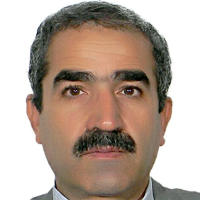Population fluctuation of the olive fruit fly, Bactrocera oleae (Rossi) (Dip.: Tephritidae) in the Tarom Sofla region, Iran
Author(s):
Article Type:
Research/Original Article (دارای رتبه معتبر)
Abstract:
Olive fruit fly, Bactrocera oleae (Rossi), is one of the most important and main pests that attack olives all around the world, especially in Mediterranean countries. This research was done to study some biological characteristics of the pest in two years. This pest has three to five generations in the Tarom sofla area of Qazvin province. Results showed that fly overwinters as adult mainly but rarely as pupa beneath the plant debris and surface soil layer of the olive orchards. The olive fruit fly attacks the fruits as the weather warms up and after a period of reproductive diapause, in late spring and early summer, at the same time as the olive core hardens (Pit hardening). Climatic changes and olive tree phenology and access to olive fruit were constant and fully correlated with olive fruit fly activity. Based on these results, the first generation, because of the favorable conditions and the product of in the first year, happened generally in July, the second generation has continued between August and September, the third generation between September and October, the fourth generation in October and November, and the fifth generation or the wintering generation in November and December. But in the second year, due to the low yield and weather conditions, the first generation was generally observed in August, the second generation in September, the third generation between September and October, and the fourth generation (wintering generation) in October and November, and another fruit was not observed in December. Due to the long oviposition period, the olive fly has overlapping generations. The density of the olive fly population in the third and fourth generation is more than the first and second generation. In the early generations, the sex ratio is in favor of males, but in the last generation, it changes to 1:1.
Keywords:
Language:
Persian
Published:
Journal of Entomological Society of Iran, Volume:42 Issue: 4, 2023
Pages:
331 to 344
https://magiran.com/p2555165
سامانه نویسندگان
مقالات دیگری از این نویسنده (گان)
-
کاهش دوز حشره کش های دلتامترین با دو فرمولاسیون سوسپانسیون و امولسیون در کنترل شیمیایی سن گندم
*، شهلا باقری متین، علیرضا حق شناس، مریم فروزان
نشریه آفت کش ها در علوم گیاه پزشکی، بهار و تابستان 1403 -
The role of sticky yellow traps in reducing the population of the Dubas Bug, Ommatissus lybicus.
*
Journal of Entomological Society of Iran, -
Effect of feeding the predatory bug Macrolophus pygmaeus on plant and using a combination of free amino acids on biological parameters of Trialeurodes vaporariorum and efficiency of Encarsia formosa
Arezu Vandshoaei *,
Journal of Applied Research in Plant Protection, -
Use of nonlinear models in determining the temperature thresholds of olive fruit fly Bactrocera oleae (Rossi) in the Tarom sofla region
*, Gh. Gharekhani, H. Ranjbar Aghdam, A.K. Keyhanian
Applied Entomology and Phytopathology, -
بررسی تاثیر ارقام مختلف گندم در زاد و ولد و نسبت جنسیت شپشه گندم Sitophitus granarius L.
نشریه آفات و بیماریهای گیاهی، تابستان 1381




